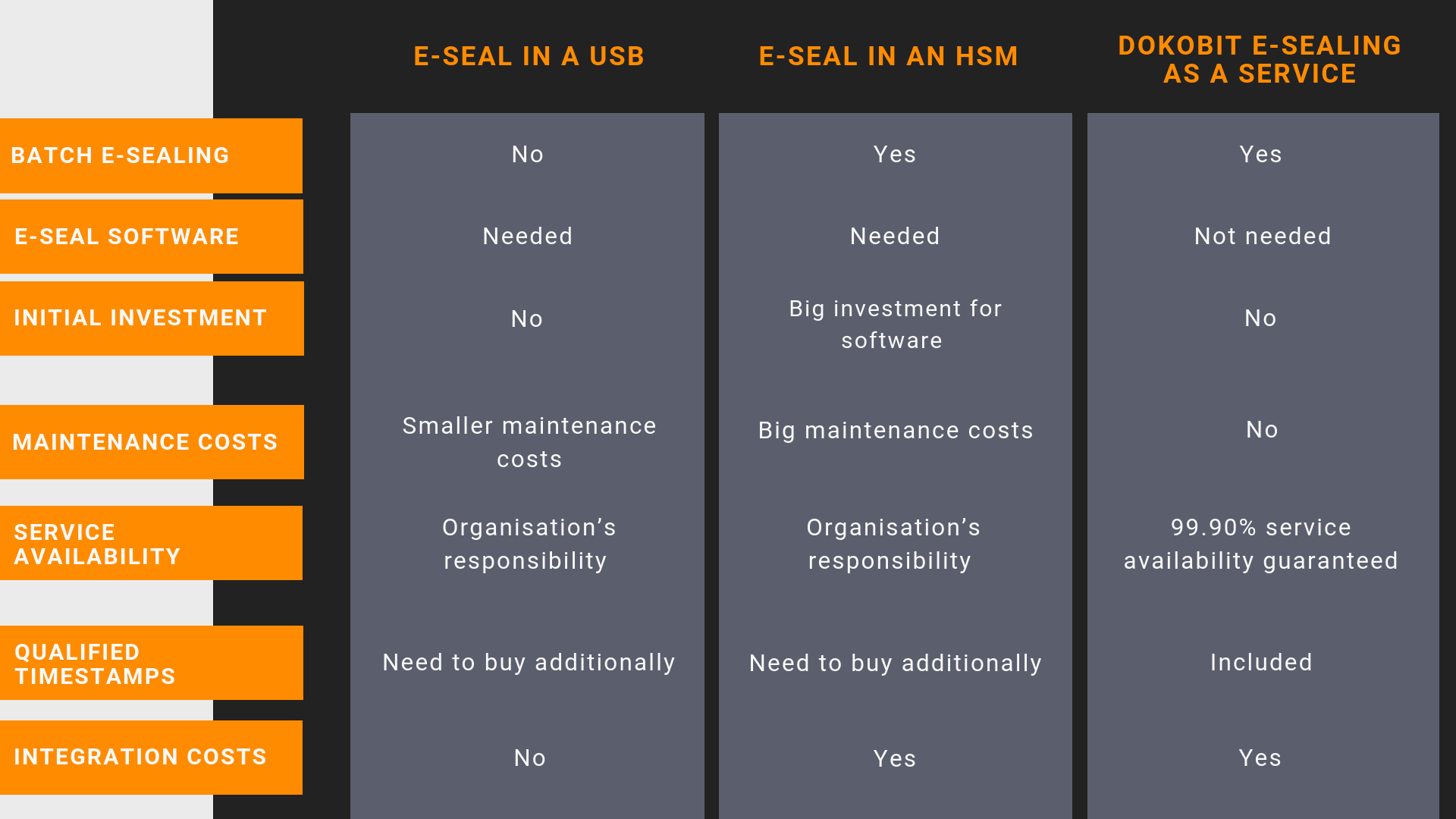As e-seal is becoming more and more popular among companies, it is surely useful to know all about them. If you want to learn more what e-seal is, where to use it, in what forms it exists and which one to choose, this post is for you.
What is an electronic seal?
Electronic seal can be described as a company’s stamp in electronic form. E-seals are issued only to legal persons and are used to ensure the origin and integrity of documents or data. Electronic seals just as electronic signatures are divided into Advanced and Qualified ones.
An e-document sealed with a qualified e-seal has the same legal effect as an original document sealed with a regular company’s seal. A qualified e-seal is acknowledge in the entire European Economic Area.
Document e-sealing is a conscious action confirming data in the document (integrity), legal entity that added the seal (authenticity) and data origin.
More about e-seals and their levels can be found here.
Forms of e-seals
Depending on its level, e-seal can be issued in two forms.
An advanced e-seal with a qualified certificate is stored in cloud, in a special hardware security module in organisation’s infrastructure and is integrated into information systems.
Meanwhile a qualified e-seal can be issued in either a USB cryptostick or stored in cloud. Cloud-based e-seal is stored in a special hardware security module that is included in the European Commission’s administrated list of qualified e-signature and e-seal creation devices.
What’s the difference? With a cloud-based e-seal there is no need to have a separate device as it’s integrated into your information system and can be accessible in a centralised way. This means that all the organisation users with the access to e-seal can use it comfortably, without sharing a certain device, i.e., a USB stick. Plus, with the cloud-based e-seal you can seal documents in batches rather than each document separately.
Use cases of e-seal
E-seals can be used in various cases. For example, to ensure integrity and origin of sensitive information like financial reports or person’s health information; to seal automatically generated documents like invoices, payment statements, statements from databases; to confirm automated processes (machine to machine); etc.
What is needed to start using e-seal?
In order to start using an electronic seal, there are a few things that you will need:
- a qualified e-seal certificate that is issued only by a qualified trusted service provider;
- an e-seal creation device in a USB or HSM;
- a software that is capable to work with e-seal in USB or have an integration with your chosen HSM. It also needs to know how to add a seal on a chosen document type (ADoc, PDF, ASiC-E, etc.) or know how to format them.
So you have 2 choices:
- buy an e-seal in any form and take care of additional software by yourself. E-seal can be bought from various service providers in this list, it doesn’t matter which country or institution’s seal you buy, it will be valid in the entire EU.
- buy e-sealing as a service and not worry about additional means. Dokobit can offer the whole package: a qualified e-seal certificate from partners SK ID Solutions, an international provider of e-identity solutions and a qualified trust service provider, a cloud-based HSM and a platform to use the seals (either Dokobit portal or e-sealing API). More information can be accessed here.
Here’s a comparison for you to better understand the differences:

If you want to buy our e-sealing as a service or have more questions about it, please fill out this contact form and we will contact you!
